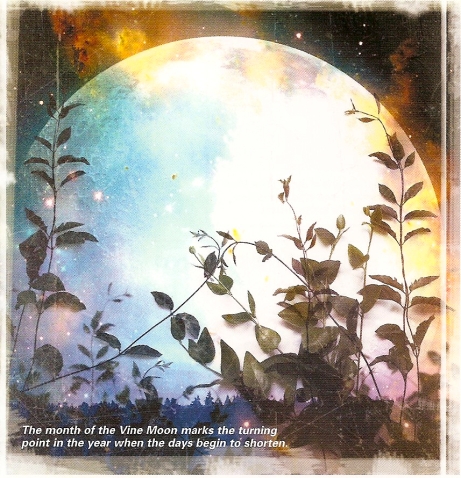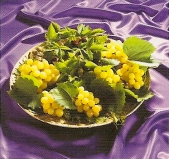“Tatsuta-Hime’s themes are children, health, luck, thankfulness, autumn, blessings, abundance and protection. Her symbols are Fall leaves. This windy Japanese Goddess blows into our lives today offering blessings and abundance for all our efforts. Tradition tells us that She weaves the Fall leaves into a montage of color, then sweeps them away along with any late-fall maladies. Sailors often wear an amulet bearing Her name to weather difficult storms at sea safely.
The Shichi-go-San Festival, also known as the 7-5-3 Festival, in Japan is a huge birthday celebration for children who have reached these ages. Parents take their young ones to local shrines for the Goddess’ and Gods’ blessings. Here they receive a gift of rice for prosperity, and a bit of pink hard candy for a long life.
If you have children, by all means follow this custom to draw Tatsuta-Hime’s protective energies into their lives. Place some rice, a piece of pink candy, and a strand of the child’s hair in a little sealed box. Write the Goddess’s name somewhere on the box to keep her blessing intact. Put this in the child’s room or on the family altar.
To manifest this Goddess’s health and well-being, take several swatches of fabric bearing her name and sew them into various items of clothing, or carry on in your pocket. Should your day prove emotionally stormy, this little charm will keep you centered, calm, and ‘on course’.”
(Patricia Telesco, “365 Goddess: a daily guide to the magic and inspiration of the goddess”.)
Though Tatsuta-Hime (pronounced tat-SUE-tah HEE-may) is a minor wind Goddess, Her essence and actions are unforgettable. It is said that each year Tatsuta-Hime, Goddess of dyeing and weaving, dyes silk yarn and weaves a beautiful multicolored tapestry of yellow, orange, russet, crimson and gold. She then incarnated Herself as wind and blew Her own work to shreds. According to Janet and Stewart Farrar, Her male counterpart is Tatsuta-Hiko and is prayed to for good harvests.
Sources:
Farrar, Janet & Stewart. The Witches’ Goddess.
Goddesses-and-gods.blogspot.com, “Tatsuta-Hime“.
Hathaway, Nancy. The Friendly Guide to Mythology, “Tatsuta-Hime“.
Monaghan, Patricia. The New Book of Goddesses and Heroines, “Tatsuma-Hime”.
Suggested Links:
Darumamuseumgallery.blogspot.com, “Four Seasons Deities“.
Satow, Sir Earnest Mason & A.G.S. Hawes. A Handbook for Travelers in central and northern Japan, “Tatta“, (p. 386).























